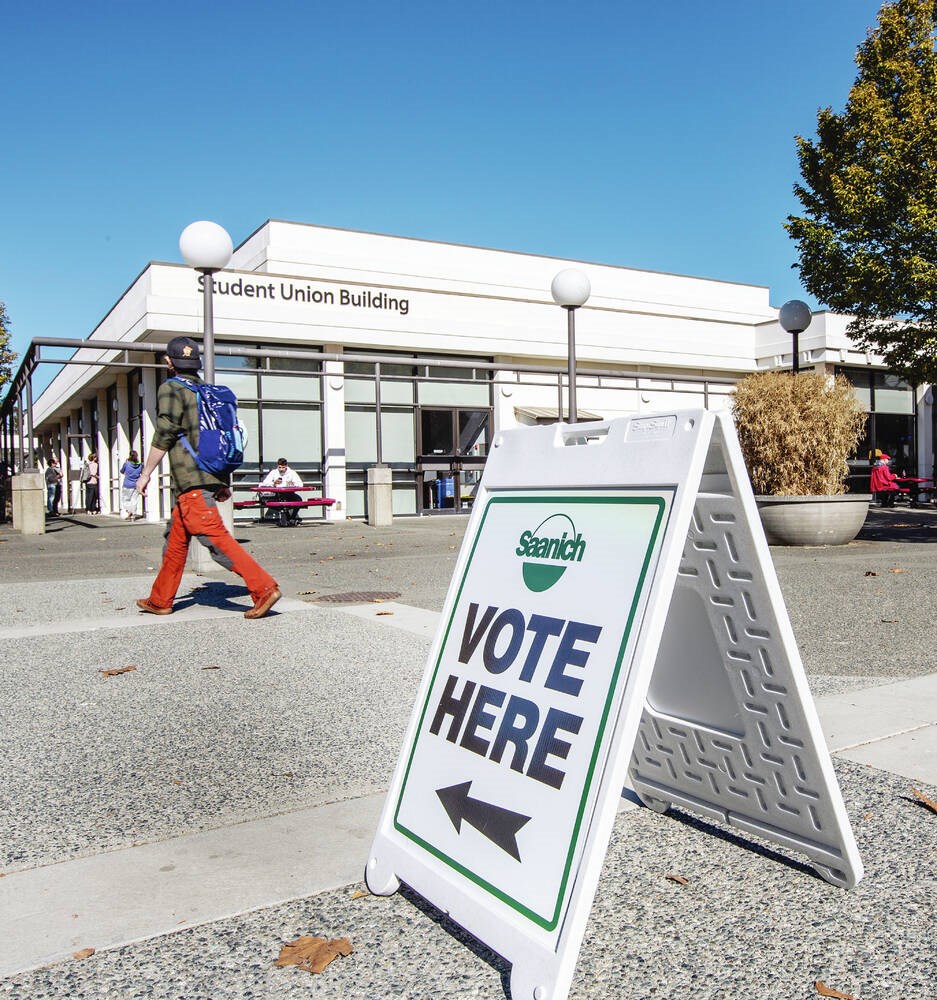Judging by advance voting numbers, the small community of Qualicum Beach has a big interest in the outcome of Saturday’s election.
The two advance voting days saw 2,277 ballots cast and more than 350 mail-in ballots requested by voters, up from 2,128 advance ballots cast in 2018, and 406 over 2014.
While in 2018, the average turnout of voters in municipal elections throughout the province was 35.6 per cent. Qualicum Beach handily beat that with an estimated turnout of 58.9 per cent.
This year’s election is generating extra interest because Mayor Brian Wiese is fighting to keep his job in a face-off with former long-time mayor Coun. Teunis Westbroek.
In Victoria and Saanich, however, advance voting was down slightly from 2018.
Victoria, where two sitting council members — Stephen Andrew and Marianne Alto — are competing for the mayor’s seat, saw 4,613 ballots cast in advance polls, representing 6.4 per cent of registered voters. That’s down slightly from 2018 when 4,791 voters went to advance polls, or seven per cent of voters.
Only one incumbent councillor, Ben Isitt, is running again in the city, meaning there will be a significant change in the makeup of council.
In Saanich, where a battle between incumbent Fred Haynes and former councillor Dean Murdock for the mayor’s job is underway, three days of advance voting generated 6,528 ballots, slightly behind 2018, when 6,941 advance votes were cast.
Also, 541 mail in ballots have been returned. The total votes so far represent nearly eight per cent of registered voters.
In Nanaimo, where all incumbent council members are running again except for Coun. Jim Turley, advance voting numbers were also down, with 4,430 votes cast compared with 4,970 in 2018.
Some believe the response to advance polls can predict election day turnout, but University of Victoria political scientist Michael Prince says that isn’t necessarily the case.
“If you look at provincial and federal elections recently, people are appreciating the additional opportunities to vote other than on the day itself.”
That includes allowing for mail-in votes and increasing the number of advance voting days.
A recent stretch of warm, dry weather also encouraged people to vote ahead of time, he said.
Prince said there is a culture of activism in the capital region, even at the local level, so election-day turnout will likely be better than the provincial average, but “that’s not saying a lot.”
One area where he does anticipate voter numbers to spike is Langford, thanks to two competing slates with differing views on the community’s future. In the 2018 election, the community saw only 18.49 per cent voter turnout.
But now longtime Mayor Stew Young, with a slate called Community First, is facing a challenge from the new Langford Now group, which wants to restrain the pace of development.
“With the two slates I think there is some real interest there and people will be getting out to vote,” Prince said.
> For more election news and candidate information, go to



